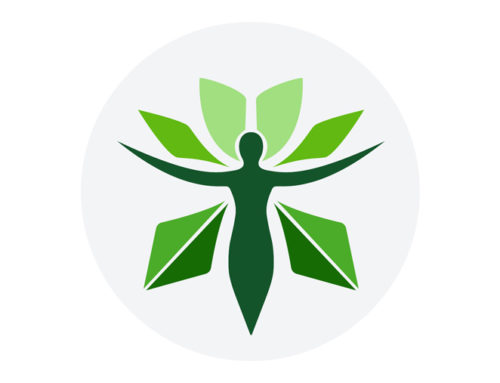Research into human microbiota has demonstrated its importance in supporting long-term and short-term human health. The ISAPP, a non-profit collaboration of experts, published a consensus statement to provide clear definitions of prebiotics and postbiotics. The panel defined a postbiotic as a “preparation of inanimate microorganisms and/or their components that confers a health benefit on the host” 1. This definition folds in the concepts of both parabiotics and postbiotics, denoting non-viable or inactivated microbial cell fractions, cell lysates that trigger probiotic effects, or bioactivity2 as distinguished from probiotics which are viable living bacteria. Both parabiotics/ postbiotics are garnering specific interest in treating disease due to their clear chemical structures, safety dose parameters, long shelf life, and the various signaling molecules that may have anti-inflammatory, immunomodulatory, and antioxidant activities. As postbiotics do not contain live microorganisms, any risks such as vulnerability to oxygen and heat associated with their intake are minimized3. The exact mechanism of their bioactivity is not clearly understood yet, but it appears the human cells are able to recognize the DNA material in parabiotics and postbiotics.
Postbiotics2 include but are not limited to secretory metabolites and functional proteins, peptides, bacteriocins, short-chain fatty acids, enzymes, polysaccharides, and organic acids released by, produced by, or derived through the metabolic activity of a probiotic bacteria or yeast, and which exert a beneficial effect on the host, directly or indirectly. Postbiotics can be released after bacteria lysis, breaking open the membrane of a cell, or they can be secreted by live bacteria. A fluid containing the contents of lysed cells is called a lysate.
Cell-free supernatants contain biologically active metabolites (such as lactic acid) secreted by bacteria and yeast into the surrounding liquid. Lactobacillus casei supernatants (no cell parts or structural components) have been shown to have anti-inflammatory, anti-bacterial, and antioxidant effects. 4
Some research will use the term “parabiotics” as distinguished from postbiotics to mean inactivated microbial cells or cell structural components (cell-wall polysaccharides, teichoic acids, peptidoglycans, cell surface proteins) that confer health benefits to the host.
Benefits of Postbiotics/Parabiotics:
- Secreted proteins and amino peptides help protect the intestinal barrier functions and benefit the immune responses in the skin.
- L. gasseri proteins contribute to the inhibition of the adhesion of Trichomonas vaginalis in the human vagina.5
- Postbiotics/Parabiotics have anti-microbial effects on skin pathogens.
- Short-chain fatty acids are products of gut microbiota from indigestible food components. They are essential for health and well-being by providing energy sources for colonic epithelium cells, maintaining metabolic homeostasis, regulating T regulatory cells, and their anti-inflammatory effects.
- Postbiotics/Parabiotics produce neurotransmitters that promote the proper functioning of the gut-brain axis, such as serotonin, dopamine, and acetylcholine.
- Postbiotics/Parabiotics suppress autoimmune and inflammatory bowel disease.
- The anti-inflammatory responses and competitive binding of postbiotics/parabiotics to intestinal epithelial cells inhibit pathogen infection.
- Polysaccharides facilitate the interaction of bacteria with the environment, protect against pathogens and act as a protective layer.
- Salminen, S., Collado, M.C., Endo, A. et al. The International Scientific Association of Probiotics and Prebiotics (ISAPP) consensus statement on the definition and scope of postbiotics. Nat Rev Gastroenterol Hepatol 18, 649–667 (2021). https://doi.org/10.1038/s41575-021-00440-6
- 1. Cicenia A, Scirocco A, Carabotti M, Pallotta L, Marignani M, Severi C. Postbiotic activities of Lactobacilli-derived factors. J Clin Gastroenterol. (2014) 48:S18–22. doi: 10.1097/MCG.0000000000 000231
- Żółkiewicz J, Marzec A, Ruszczyński M, Feleszko W. Postbiotics‐A step beyond pre‐ and probiotics. Nutrients. 2020;12(8):2189. 10.3390/nu12082189
- Taverniti V, Guglielmetti S. The immunomodulatory properties of probiotic microorganisms beyond their viability (ghost probiotics : proposal of paraprobiotic concept). Genes Nutr. (2011)
- Paraprobiotics and Postbiotics of Probiotic Lactobacilli, Their Positive Effects on the Host and Action Mechanisms: A Review Tsegay Teame, Anran Wang, Mingxu Xie, Zhen Zhang, Yalin Yang, Qianwen Ding, Chenchen Gao, Rolf Erik Olsen, Chao Ran, Zhigang Zhou
Front Nutr. 2020; 7: 570344. Published online 2020 Oct 22. doi: 10.3389/fnut.2020.570344
- Phukan N, Brooks AES, Simoes-Barbosa A. A cell surface aggregation promoting factor from Lactobacillus gasseri contributes to inhibition of Trichomonas vaginalis adhesion to human vaginal ectocervical cells. Infect Immun. (2018) 86:e00907–17. 10.1128/IAI.00907-1






Leave A Comment